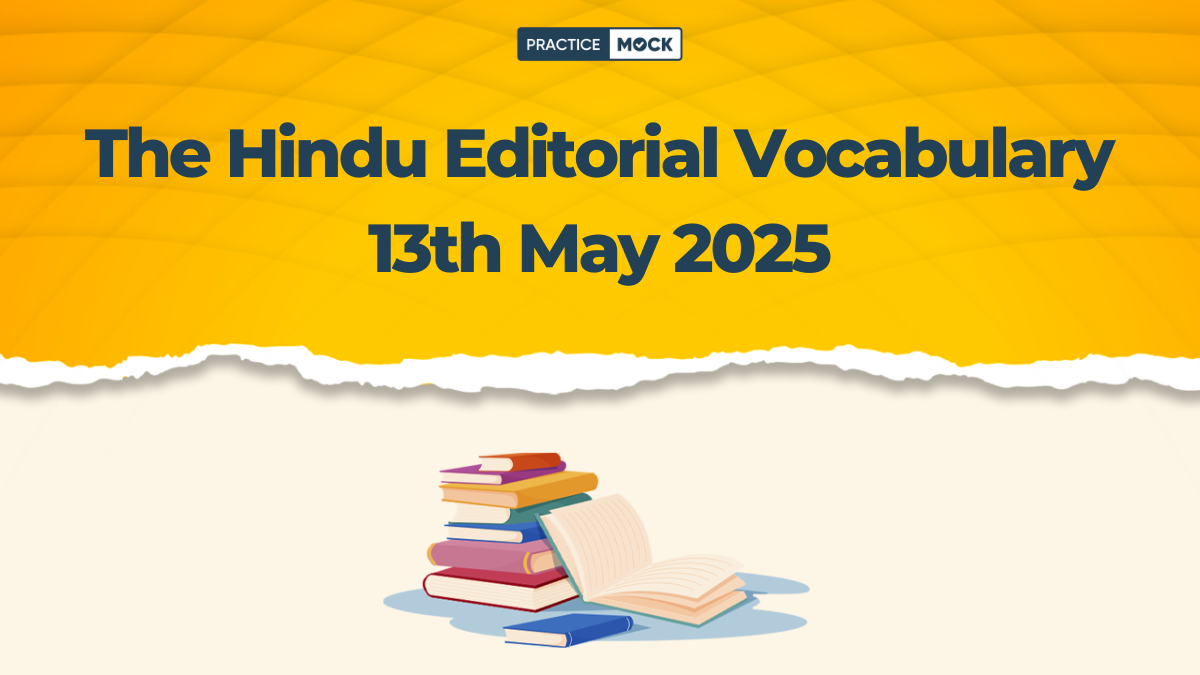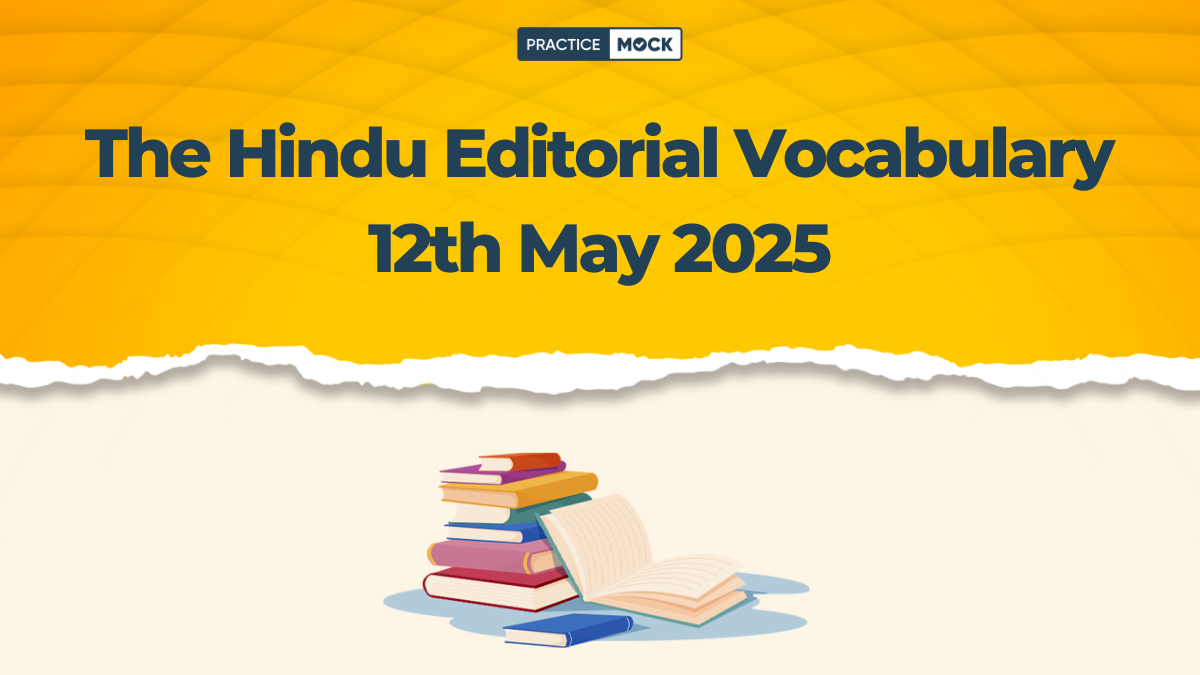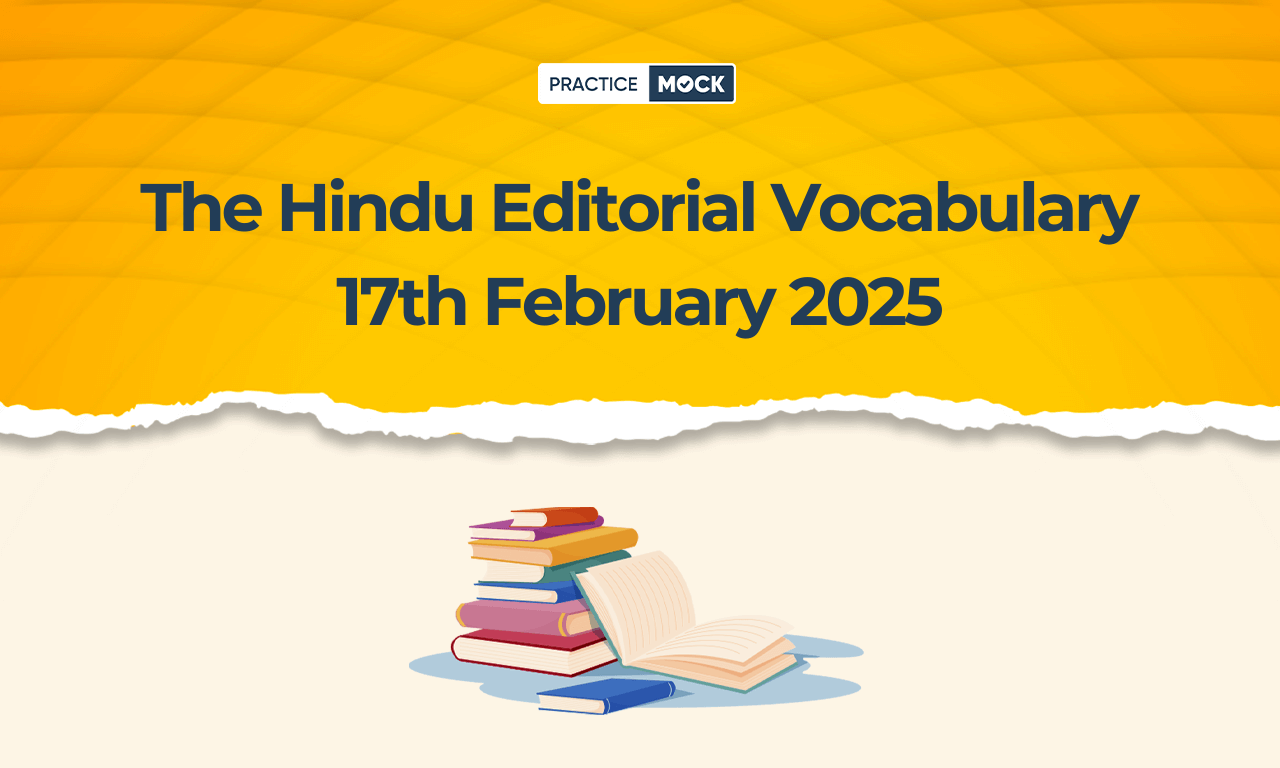

| Difficult Word/ Phrase | Contextual Sense |
| Variance | An activity that varies from a norm or standard |
| Vagary | An unexpected and inexplicable change in something (in a situation or a person’s behaviour, etc.) |
| Deficit | The amount by which something is less than expected or required |
| Subdue | Reduce |
| On the horizon | likely to happen soon |
| Converse | Obsolete |
| Deluge | A heavy rain |
| Landslide | A slide of a large mass of dirt and rock down a mountain or cliff |
| Grapple | Succeed in doing, achieving, or producing (something) with the limited or inadequate means available |
| Anthropogenic | Of or relating to the study of the origins and development of human beings |
| Spectrum | A broad range of related objects, values, qualities, ideas or activities |
| Peninsular | Related to any land area projecting out into water |
| Spatial | connected with the size or position and area of something |
| Temporal | Of or relating to or limited by time |
| Reiterate | To say, state, or perform again |
| Dynamics | the way in which things behave and react to each other in a particular situation |
Capturing the monsoon: its variance (An activity that varies from a norm or standard) and the message
India needs all-weather insurance against vagaries (An unexpected and inexplicable change in something (in a situation or a person’s behaviour, etc.)) of global climate
For the first time since 2018, India has reported a deficit (The amount by which something is less than expected or required) monsoon. From June to September this year, India received 82 cm of rainfall, nearly 6% lower than the 89 cm that is considered ‘normal’. Beginning April, there were enough indications that the monsoon would be subdued (reduced) with an El Niño on the horizon (likely to happen soon). This cyclical warming of the central and eastern Pacific Ocean usually corresponds to a decline in rainfall over India, particularly the north-west. Between 2019 and 2022, the Indian monsoon was significantly impacted by the converse (obsolete) phenomenon – a cooling La Niña — that sometimes is associated with above normal rainfall. By those metrics, the expectations of a normal monsoon in 2023 were muted. However, the experience of the monsoon this year was far from the ordinary. About 9% of the country received ‘excess’ rainfall with 18% getting ‘deficient’ and the rest of the country, ‘normal’ rainfall. While on one hand, August — the second-most important monsoon month — posted a third less than its normal, several States in north India, which were expecting minimal rainfall, were deluged (A heavy rain) following multiple episodes of record rainfall. July, for instance, saw exceptionally heavy rainfall in Chandigarh, Haryana and Himachal Pradesh, resulting in floods and landslides (A slide of a large mass of dirt and rock down a mountain or cliff). Several cities were left grappling (Succeed in doing, achieving, or producing (something) with the limited or inadequate means available) with serious flooding over several days. Cloudbursts were reported in Himachal Pradesh in August. It is worthwhile to note here that these episodes of intense rain were due to so-called western disturbances that are extra tropical storms from the Mediterranean region and normally not expected to play a major part in the monsoon. Thus, these are fingerprints of the wide-ranging impacts of anthropogenic (Of or relating to the study of the origins and development of human beings) warming.
At the other end of the spectrum (A broad range of related objects, values, qualities, ideas or activities) were drought-like conditions in Maharashtra. Extreme water stress was also reported out of Chhattisgarh, Bihar and Karnataka, where in the case of Karnataka, matters came to a head with neighbouring Tamil Nadu over the sharing of water from the Cauvery river. The India Meteorological Department has also forecast a ‘normal’ north-east monsoon from October to December and ‘normal to above-normal rainfall’ over large parts of north-west India and south peninsular (any land area projecting out into water) India. The signs are there of increased rains in several parts of south India. The spatial (connected with the size or position and area of something) and temporal variance of the monsoon reiterates (To say, state, or perform again) the need to invest in more resilient infrastructure that can be an all-weather insurance against the increasingly unpredictable vagaries of the global climate. The pattern in recent years is to improve forecast models that are better able to warn of significant changes in weather a week or two ahead than having approaches that fail to capture the dynamics (the way in which things behave and react to each other in a particular situation) of the Indian monsoon. More money and expertise should be directed towards this.
Want to improve your vocabulary further? Download the Lists of Word-Meanings of Previous Months here.
Recent Posts
IBPS RRB Notification 2025 in June, PO & Clerk Exam Date Out, Check All Upcoming Events
The IBPS RRB Notification 2025 is expected to be released in June 2025. Candidates can…
IBPS RRB PO Prelims Mock Test Free 2025, Attempt Now!
Here we are providing the IBPS RRB PO Prelims Mock Test Free 2025. Candidates can…
UPSC Admit Card 2025 Out for Prelims, Get Direct Link
The UPSC has released the UPSC Admit Card 2025 for Prelims exam. In this blog,…
How to Crack RBI Grade B in First Attempt?
Aspirants preparing for RBI Grade B exam. Know the 10 tips to crack RBI 2025…
IBPS PO vs RRB PO, Which Exam is Easier to Crack?
IBPS PO or RRB PO? Compare difficulty, pattern, and job roles to choose the best…
How to Master Government Schemes for RBI Grade B Exam
Master government schemes effectively for the RBI Grade B exam with comprlete strategies, Important resources…


